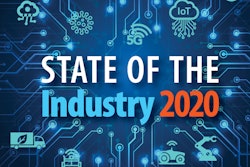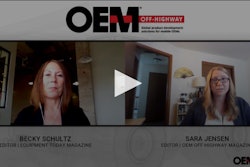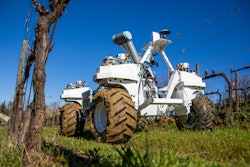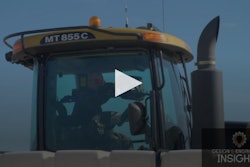
responses submitted by Riccardo Viaggi, Secretary General, Committee for European Construction Equipment (CECE)
Global Markets, Government & Trade
Can you discuss the EU Recovery Plan and what role will it play in helping boost infrastructure investment and aid the off-road equipment industry overall?
The EU recovery plan is the latest measure that has been put in place by the EU to respond to the COVID crisis. It is a general deal that has been made by the heads of state of the members of the European Union. So it is not yet operational. But the political agreement has been made about a fund [of] up to a 750 billion euros additional to the budget that is expected to boost investment and allow for speedy recovery of the EU economy. The downturn is severe in most of the major industrial countries in the European Union; the heads of state and the European Commission agreed that something must be put in place and we expect the EU recovery plan to finance needed investments in the "twin transitions"—the digital transition and the environmental transition. We believe that in both [of] these transitions, the construction industry has a role to play and by direct consequence the equipment that our members manufacture will be central to both transitions and will be able to profit from the resources that are put on the table [with] this recovery plan. Historically, I think it's important to remember, it's the first time that the European Union as a whole will create financial debt and the financial resources to boost the [economy].
There is another reason why we think construction will be positively impacted by the recovery fund and the recovery plan; it is one of the worst hit economic industries by COVID. We are hearing from the European contractors federation that there is a loss in turnover of over 20% projected in 2020. So this fund should also target those specific industries which have been hardest hit, and construction is one. These are the two reasons why we believe that a large portion of the 750 billion euros will go to construction and indirectly to off-road equipment for construction.
Impacts of COVID-19
What have been some of the biggest challenges the industry has faced due to the COVID-19 pandemic and how can or will the industry overcome these?
From a manufacturing point of view, the real burden has been the factory shutdowns and the impact this had on the whole supply chain because the factory shutdowns started in January and early February in China with suppliers of key components and not being able to deliver to European manufacturers anymore. And then factor shutdowns in Italy, Germany, France, the UK, all the other industrial manufacturing hubs came to a complete halt for close to two months. There are estimates between 9 and 10% of the general production has been completely lost because the factories were closed for 2 months. The biggest challenge now is what the demand for construction equipment will be.
In addition, manufacturers need to comply with the Stage V [emissions] regulation. This regulation had transition deadlines which which were in place and were about to expire in the middle of the COVID crisis, on June 30. This added an additional challenge of meeting the deadline when factories were shut down. One of the most important elements to overcome the crisis was to get the deadlines extended. Luckily after long, steady work to convince legislators, we obtained a 12-month extension on those transition deadlines both for the manufacturing of the machines and for the placing on the market of the machines. Those deadlines for June 30 and December 31 are now [set for] next year. That is going to give a lot of leeway to manufacturers [by allowing them] to use those transition engines which they had already bought. This has been possible thanks to the whole [off-road equipment] industry coming together. In my opinion, this is certainly a positive sign amid this crisis of how things can turn out if you work together.
Have the challenges brought to light any potential opportunities for change or improvement within the industry?
In my professional network, I think we all realized how easy it is to actually do smart work, remote work, tele-working, call it as you want. Certainly in Brussels, in industry associations, and I think up to a certain point also in our member companies [there] was this idea that if you were not in the office, you're not actually working. And I think, speaking personally, having had to work remotely from home for the last 3-4 months has taught me and I think some of my colleagues too that smart working is possible. We are as operational and as effective as before. So I think that is one, small but interesting learning or light at the end of the tunnel.
READ MORE: State of the Industry 2020
Diesel, Electric & Other Power Alternatives
How do you see alternative fuels playing a role in the heavy equipment industry in the coming years? What impact do you see electrification—or other alternative energy/power systems—having on the heavy-duty on- and off-highway mobile equipment industries?
We see all of those continuing to grow. There is a general market pressure; we are delivering that innovation and we have been delivering innovations that curb fuel costs. These market pressures have been at play for a while, [and] they continue to play a role. From a European point of view, what we start considering and will keep considering is the regulatory push in all this. For us the key is sustainability. Sustainability has three legs—it's environment, society and economy. If solutions do not meet the economic feasibility and economic productivity needs of a construction contractor and an infrastructure project, they will probably have a short lifespan. They will only work with public support, public spending. We would like to try and keep going the route of innovation, customer needs, customer pressure and partnership between a customer and the supplier.
This is for us the philosophy behind what we call the four pillars approach. So there are four pillars to CO2 reduction; that's what the European Union wants to curb with its own Green Deal and the climate law that the European Commission is planning to put on the table. We believe that there is not one single element in CO2 reduction, that all the alternative energy carriers have a role to play. As a transition or as a final step we believe that electrification is not the whole solution for the whole industry. We believe that legislators must understand we are not at all like the on-road sector, we are not manufacturers of vehicles moving people or goods from A to B, we are production machines that are used by another company in a B2B (business-to-business) transaction in order to create productivity and profits. So, this is why our four pillars approach is key because the machinery efficiency is only one of the four pillars. Then you have to add on process, you have to add on operation and you have to add on alternative energy sources. This is our approach to sustainability, to alternative fuels and to the general, very understandable struggle to curb emissions.
Are there any emissions or other related regulations your association is monitoring, or feel will have an impact on design efforts and the industry?
We always keep an eye on all regulations that might have an impact on our equipment. What we usually keep an eye on is how the regulators decide to create provisions for the heavy-duty vehicles. The legislators [have] said before sometimes they make the assumption that whatever works for big trucks works for excavators. And that of course is not the right approach. We kept an eye on what the commission has created for CO2 regulations. And we will be watching the EU Green Deal and the climate law. For the moment, we are not in the legislators' targets. But we know that we have our role to play. If it's not as a European Union regulation, there are other pressures. Cities in certain countries in Europe are pushing for zero-emission machines, for full-electric solutions—which are not the solution for the whole industry—so we are keeping an eye on everything, which is not even all of the legislation.
Data, IoT & Connectivity
What challenges remain or lay ahead for the continued adoption of data, IoT and connectivity related technologies or systems?
We know for a fact that the challenge, the barrier is not the technology. The technology is there. So the debate within CECE and our major members is not about what technological solution. We know that the challenge, the barrier is in the uptake. Our clients, both in the rental space and in the contractor space, do not always understand the profitability. They do not always have the means and the abilities from a human resources point of view to monetize the data to understand the profitability story, the profit gains that they can make with the data, with IoT, with connectivity, with even basic telematics in certain cases. So for us, that's what we need to unblock. And one way to unblock that is to create trust in the system. And trust in the system, in our opinion can be helped by creating digital environments, which function according to certain policies to certain models, which we can summarize in a word the digital platform. We are [participating] in a European project to create a digital industrial platform for the construction industry, called the DigiPLACE project which started in September 2019 and will continue until Spring 2021. It is a general action to create consensus around the need for a digital industrial platform. It is not going to be one single platform, replacing everything else, every proprietary platform which is out there, that's not the goal. The goal is to create some common understanding that will allow other platforms—preparatory, open, governmental— to be to be able to plug in, create APIs and business models that will unblock this digital transformation of the construction industry, which as we know, is still very, very far from happening. There is a very famous study by McKinsey which states that in the European economy, construction is the least digitized industry and we want that to change. Again, technology is not the problem. We as construction machinery manufacturers stand ready to take that transformation in our hands with our clients, with our suppliers and change that story of construction being the least digitized industry.
Challenges & Opportunities
What are the biggest challenges and opportunities you see for the industry?
The largest challenge, which is not always widely mentioned, is related to people, to the workforce. We as construction equipment manufacturers are actually experiencing that twofold. We are experiencing it with a lack of people in our factories. There is not a lot of appetite for youngsters to work on factory floors. But I think we're still coping; a lot of manufacturing jobs are well paid, and are being supported more by automation which makes them more "cool." This is not yet the case with a lot of construction-related jobs and operation of our machines.
There are statistics in the European Union that half of the people working in construction are nearing retirement. There are certain countries in which business owners, small business owners in construction, over half of them are 60 years old or older. And there's not necessarily a second generation taking those jobs or businesses. So there is a lack of people and I think this demographic change is here to stay. That's the challenge I see; it may not be the challenge for the next 1 or 2 years, but it's a generational challenge which I believe is not looked at and certainly not tackled widely enough.
I like to think that to every challenge there is an opportunity. Some of the things we've discussed, such as data, digitization, automation will present opportunities. A lot of the tasks in construction are being automated; a lot of repetitive tasks, physically challenging tasks are being automated or at least supported by machines—robots, cobots are buzzwords we are hearing on construction sites. This is allowing the industry to change its image from a dusty, dangerous kind of macho industry to something a bit different. And that in my opinion opens a whole new possibility when it comes to the image of the industry towards young people and even women. That's where I see possibilities to tackle that challenge.
Watch the full interview with Riccardo Viaggi below for more details and insights into industry trends.




















